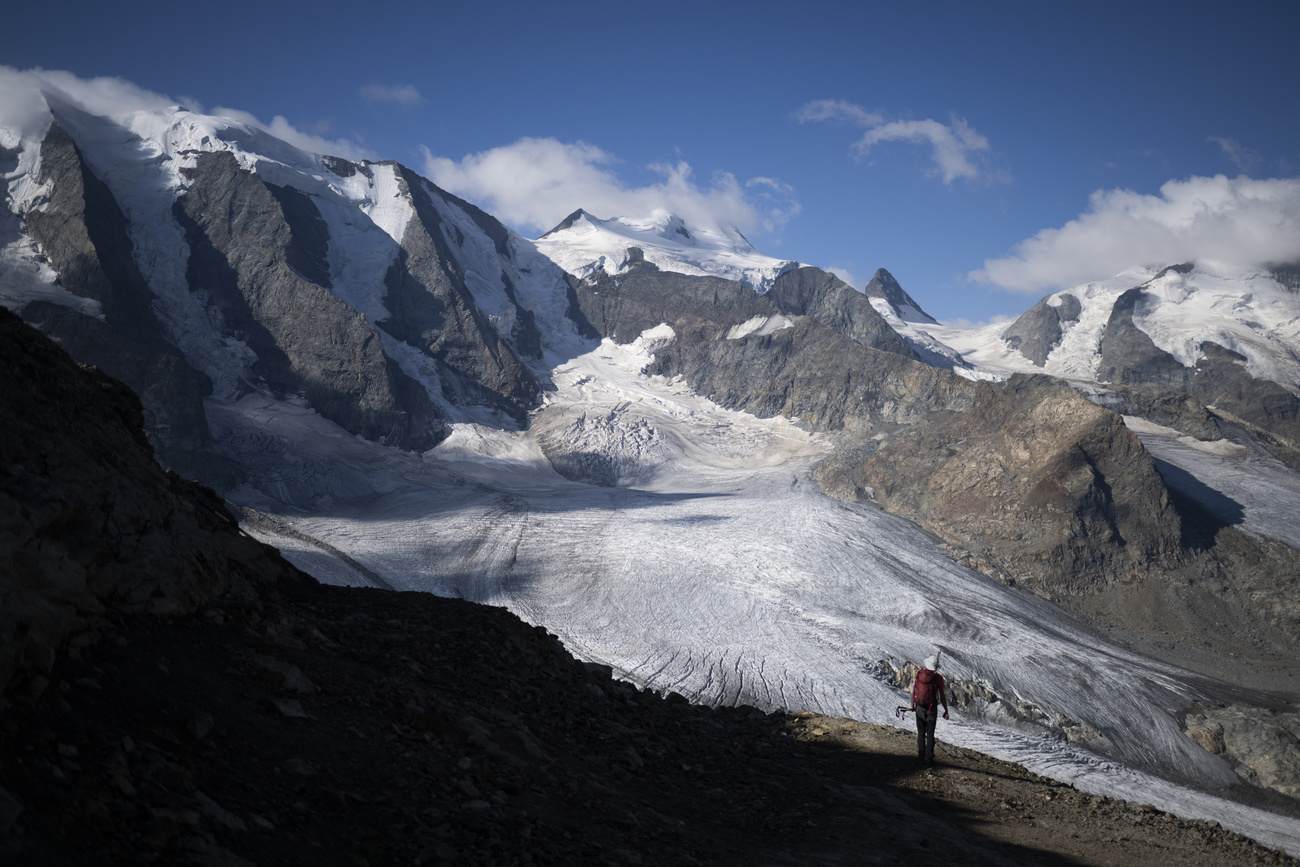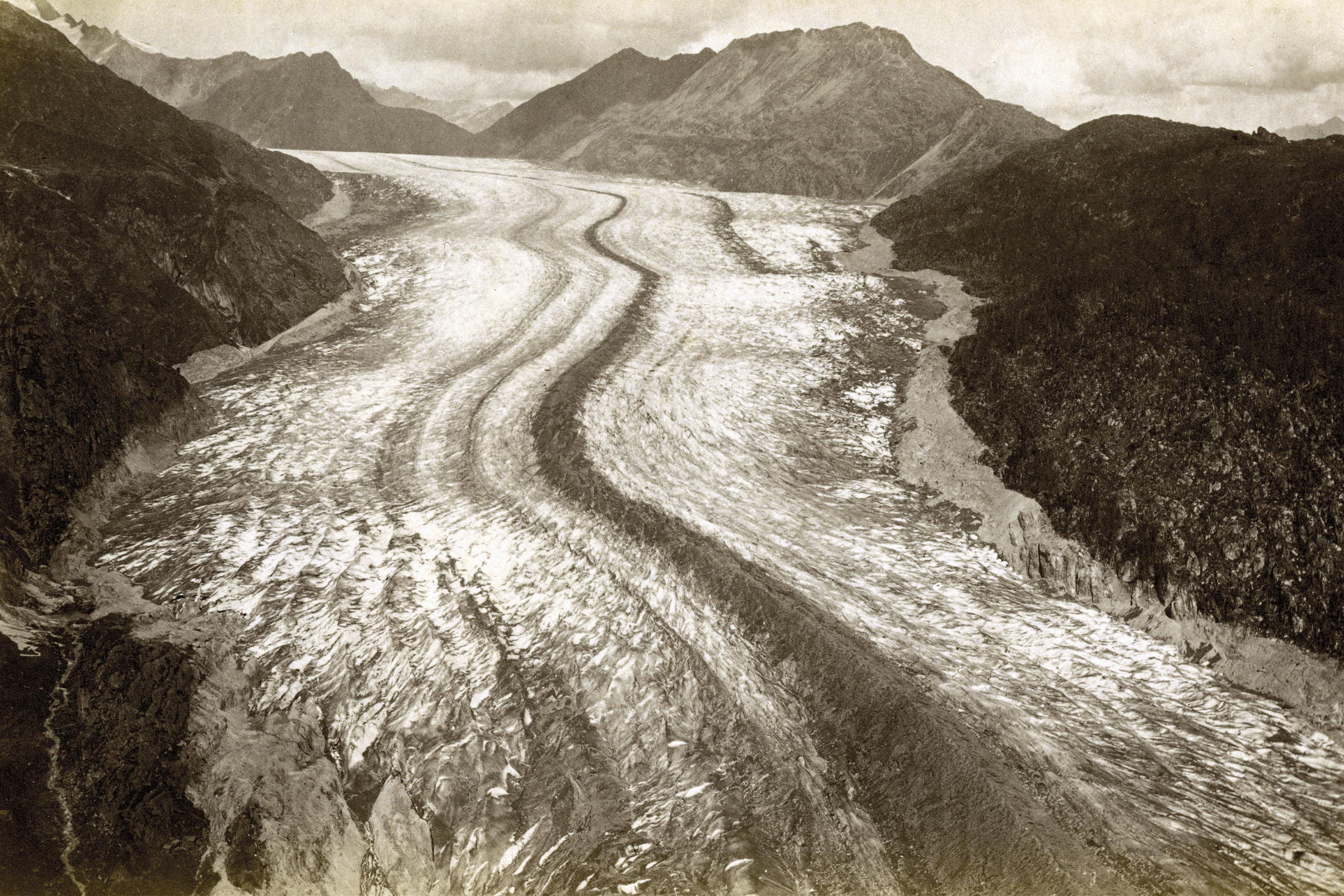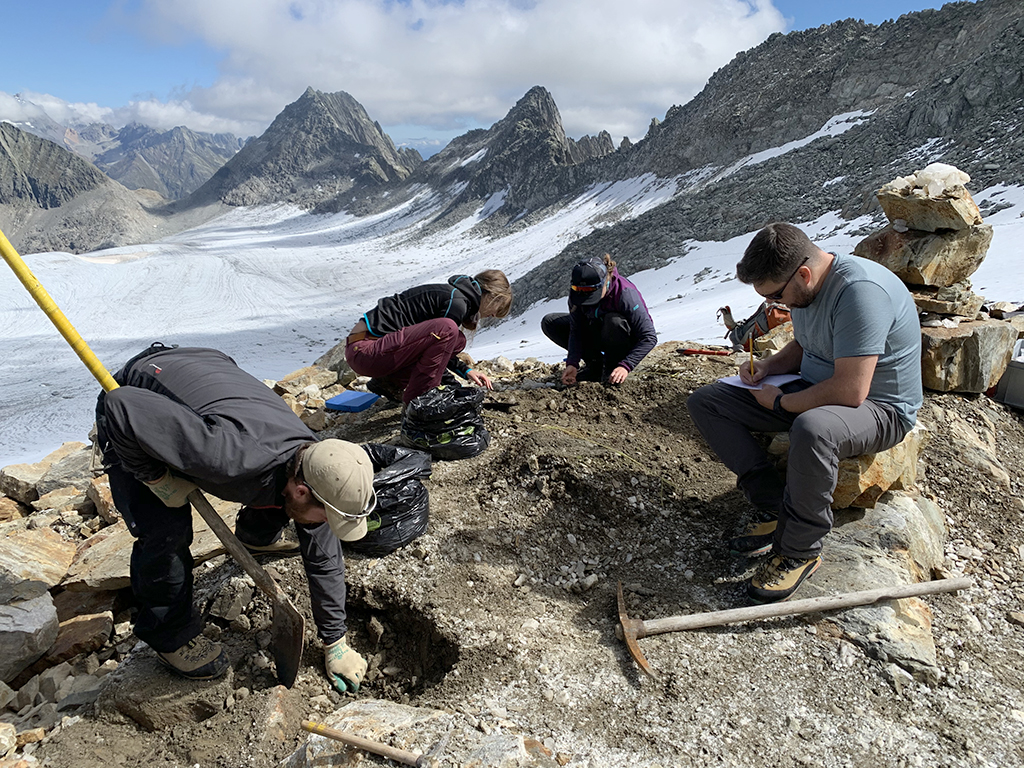
Photos show Swiss glaciers shrinking by half

Switzerland’s glaciers lost half of their volume between 1931 and 2016, according to analysis of historical national survey photographs.
Researchers at the federal technology institute ETH Zurich and the Swiss Federal Institute for Forest, Snow and Landscape Research (WSL) compared photographs from the first half of last century to the current state of glaciers.
Using a comparison technique, known as stereophotogrammetry, scientists say they can accurately calculate the changing topography of glaciers and the difference in ice volume.
They looked at 21,700 photographs taken between 1916 and 1947 by the Swiss National Survey institute, now known as swisstopo.
They found that Swiss glaciers lost half their volume between 1931 and 2016 – and a further 12% between 2016 and 2021.
This amounts to a loss of 62 cubic kilometres of ice. “This is about 20% more than previously assumed,” Daniel Farinotti, Professor of Glaciology at ETH Zurich and WSL, told Swiss public broadcaster SRFExternal link.
But the researchers also found that not all glaciers shrank at the same rate and observed that Switzerland’s frozen ‘water towers’ even grew at times during the 1920s and 1980s.
It is well known that Switzerland’s glaciers have been in retreat over the last century, but science has struggled to measure the shrinkage precisely. This is partly because proper measurements only began after 1960 and only sporadically until more recent times, says ETH Zurich.
The latest research, published in The Cryosphere journal, gives a more precise picture of how glaciers have evolved over time.
“Glacier retreat is accelerating. Closely observing this phenomenon and quantifying its historical dimensions is important because it allows us to infer the glaciers’ responses to a changing climate. This information is needed to develop reliable scenarios for future glacier changes,” said Daniel FarinottiExternal link.

More
Glaciers in the Alps – before and after

More
In pursuit of the crystal hunters

In compliance with the JTI standards
More: SWI swissinfo.ch certified by the Journalism Trust Initiative




























You can find an overview of ongoing debates with our journalists here . Please join us!
If you want to start a conversation about a topic raised in this article or want to report factual errors, email us at english@swissinfo.ch.